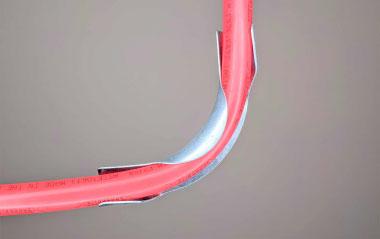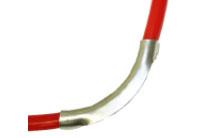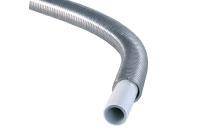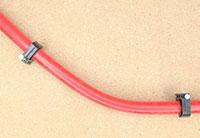PEX tubes have tons of use in our daily life but their installation becomes difficult along with areas with winding terrain.

That is why it needs to be bent to make the installation process more seamless by making the connections more reasonable.
So here we are to discuss how to bend PEX tubing for plumbers and other enthusiasts.
What Is PEX Tubing?
PEX refers to the flexible plastic material called cross-linked polyethylene which has gained recognition among professionals as the new standard material for water supply lines.
The PEX pipes are built from this high-density material since their polyethylene molecules make the structure more solid and enhance durability.
Why Should You Use PEX Tubing?

You can find the presence of PEX tubes in many commonly used systems including plumbing, air conditioners, geo-power, and refrigeration.
Of course, so many industries wouldn’t rely on these tubes if they were not beneficial.
Here are some of its benefits you can take a look at:
● Durability
No matter how scared you feel constantly about your pipe arrangements falling apart, PEX tubes can assure you a good night’s sleep every day.
It possesses an exceptional level of toughness which makes it capable of being stretched to up to 3 times its original length.
With such strong pipes, a system can withstand the huge damages resulting from mild earthquakes, seismic vibrations, and similar natural disasters.
You can see: PEX Lifespan: How Long Does It Last?
● Incredible Flexibility
Since the systems in bathrooms, refrigerators, and air conditioners are built to be as compact as possible to save space, highly flexible pipes are a welcome addition.
PEX tubes shine in this area since they can fit even in the narrowest of spaces with their supreme bending features.
Both professionals and amateurs can install them easily around sensitive structures like electrical systems. Their flexibility can also be utilized to implement simple mechanical coupling in plumbing renovations or expansions.
● Works With Hot And Cold Water
Temperature is a supremely significant factor when it comes to water supply and related system installations. For instance, a cold-water pipe can get ruptured if it has to deal with any hot water equipment.
But PEX tubes can be used for both hot and cold water systems, thanks to their PN20 pressure nominal rating. This assures you that the pipe will not break down due to temperature variations or pressure surges.
● No Leaks
Since plumbing installations are usually done at vulnerable areas of the house like tight areas and corners, a leak there can result in a lot of costly damage.
To prevent this, you can try out PEX tubes instead of metal or plastic pipes. The mechanical connection of PEX tubes can solve all those issues.
Fitting them doesn’t require glue or welding. All you need to ensure is their secure connection. Because of such conveniences, it is often considered to be the most optimum choice for plumbing pipes.
Additionally, it prevents harmful bacteria and the oxidation of equipment.
● Better Flow
Overheating is another issue that heat-welded joints often face. As a result of this, the pipeline turns narrower which in turn obstructs the water flow. If the joints used glue, this can result in leakage and disrupt the attachment.
With the mechanical connection method found in PEX pipes, you don’t have to deal with internal obstructions and enjoy a better flow of water every time.
How To Bend PEX Tubing? Step By Step Guide
Required Items:
● PEX Tubing
● Heat Gun
● Marker
● Nails
● Screws
● Hammer
● Screwdriver
● Gas Stove
● Internal Pipe Bending Spring (Optional)
● PEX Support Clamps (Optional)
● Bend Support (Optional) Process- With Bend Support
1. Process- With Bend Support

(A) Bend Specification
First of all, you will need to identify where you want to make the bend and then mark that spot. You can place the PEX pipe along that intended installation path or use tape to measure that wall.
Either way, try to mark with a little space left so that the extra length can come in handy if it falls short during the bending.
(B) Bending Implementation
Now it’s time to place the bend support such that its center position is in the same spot you previously marked. Take the bend support, attach the tube to one side and bend it slowly until both of their curves match.
Then attach the other side and carry out the installation as you usually do, avoiding high-temperature places.
2. Process- With Bend Spring

(A) Thread Into PEX Tube
In this method too, you will need to mark the point to be bent. Then proceed to insert the spring inside your PEX tube until its center point matches your marked spot.
Keep a part of that spring out so that you can easily pull it out after the process is completed.
(B) Heat And Bend
To make the bending easier, heat up the tube using a heat gun or on a gas stove. Remember to not get it too hot though since that can melt the pipe or give you a burn.
Now bend the tube slowly to your desired angle since it is more flexible now but don’t bend too much since then it can get torn.
After achieving the required shape, immerse the PEX tube in cold water so that it goes back to the hardness it had before.
3. Process- With PEX Support Clamps

(A) Attach The First Clamp
Complete the tube installation as you would otherwise and pre-shape its bend along the way. This will make it easier for you to nail the support clamps later.
Now hold on to one side of this bend and attach the first clamp to your PEX pipe. Then secure the clamp on the wall with a nail or a screw.
(B) Fix Other Side With Second Clamp
Bend the tube to your preferred angle and then use the other support clamp to fix its other side on the wall.
Since PEX tubes have a commendable elasticity, it will return to their original shape immediately. Check if the setup is working after releasing your hand.
Conclusion
Now that you know how to bend PEX tubing, you can now make your plumbing process a little easier to handle.
This simultaneously saves cost, ensures the flow of pipes, and also makes the whole setup much more aesthetically pleasing.
Along with plumbing, you can also use it for air conditioners, heating systems, refrigerators, and other similar systems
Read Also:
- PEX Expander Tool Reviews & Buying Guide
- Top PEX Cutter Buying Guide
- Our Top 10 Best PEX Crimping Tools List
- A list of Flux For Soldering Copper Pipe
- Top Quality Water Hammer Arrestor

Hey! I’m Leanda Bailey. I’m here to explain every plumbing installation and repair you may have in your kitchen or bathroom. Also, I’ll try to find you the best products on the market for your plumbing work.
